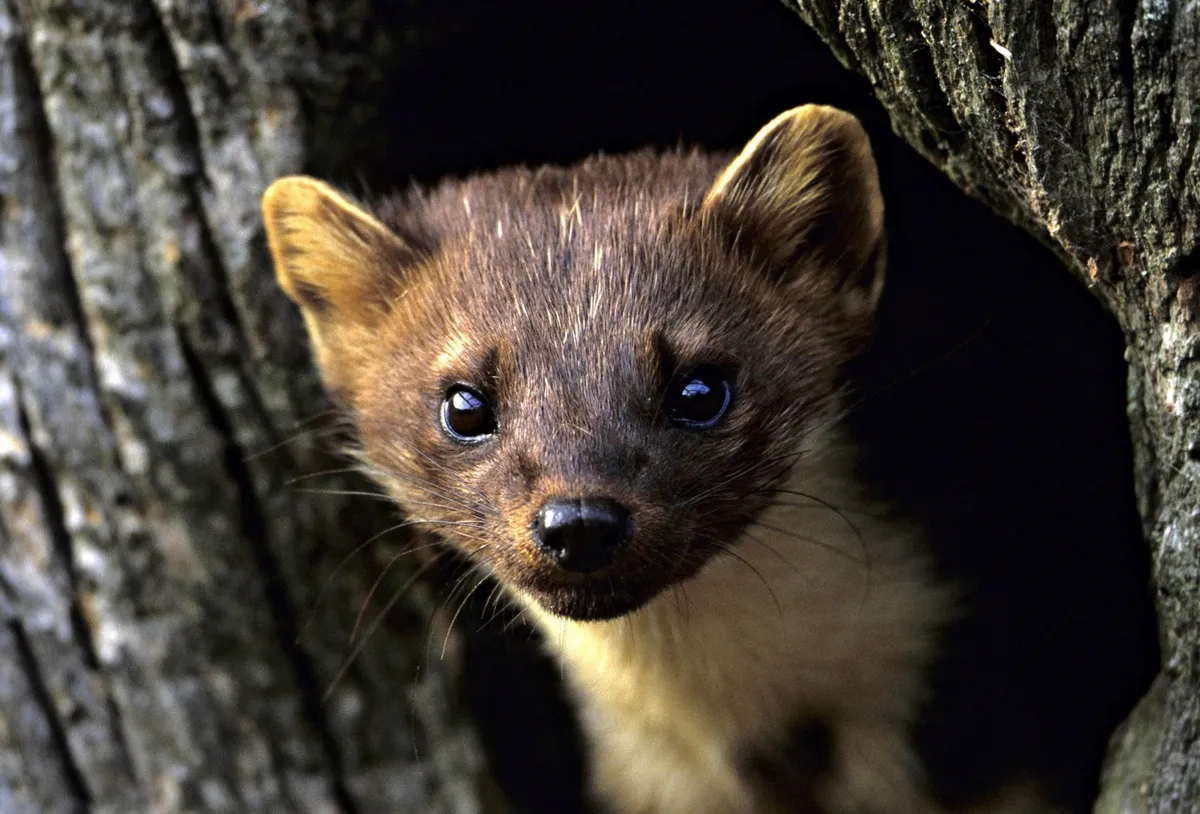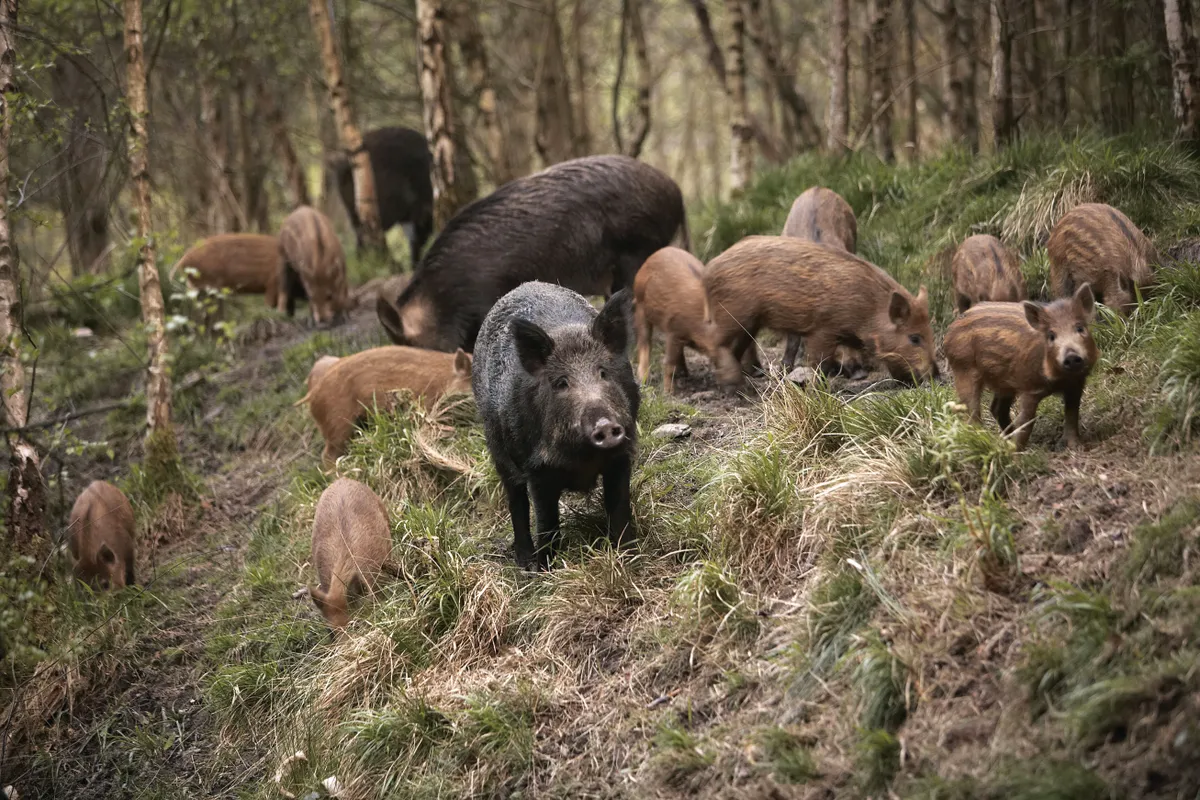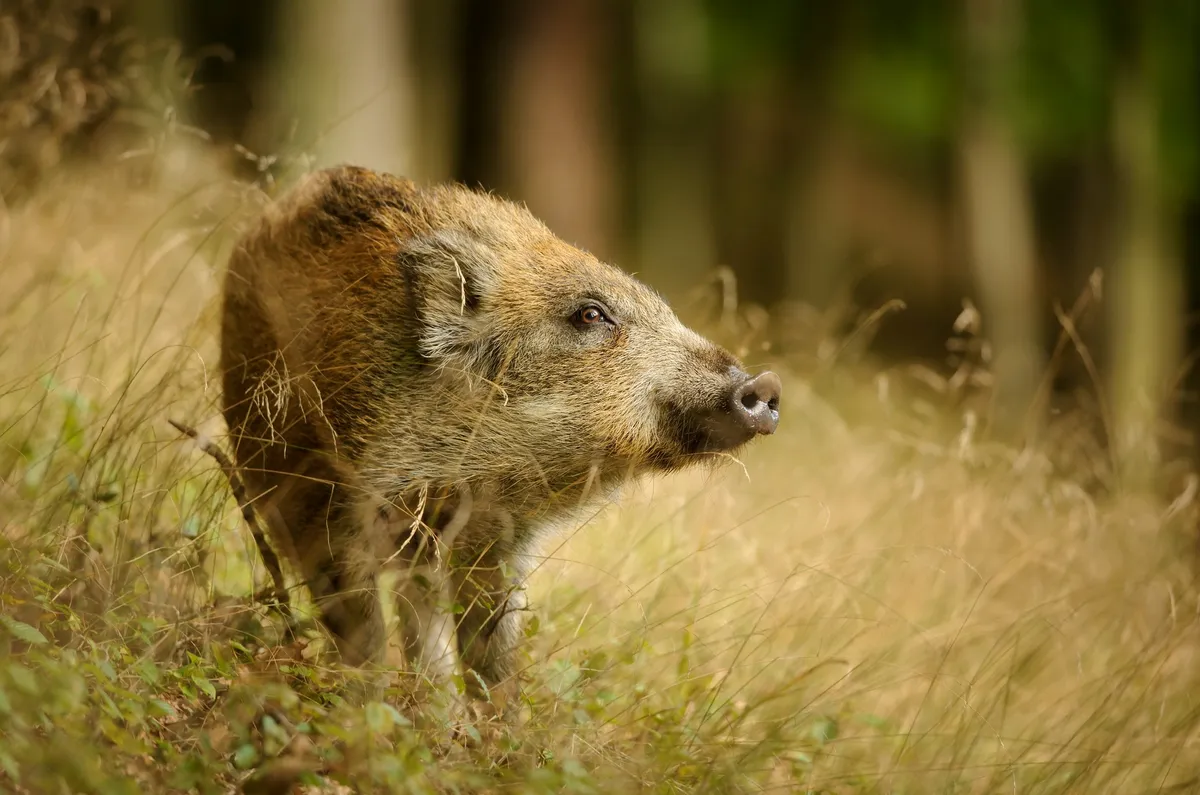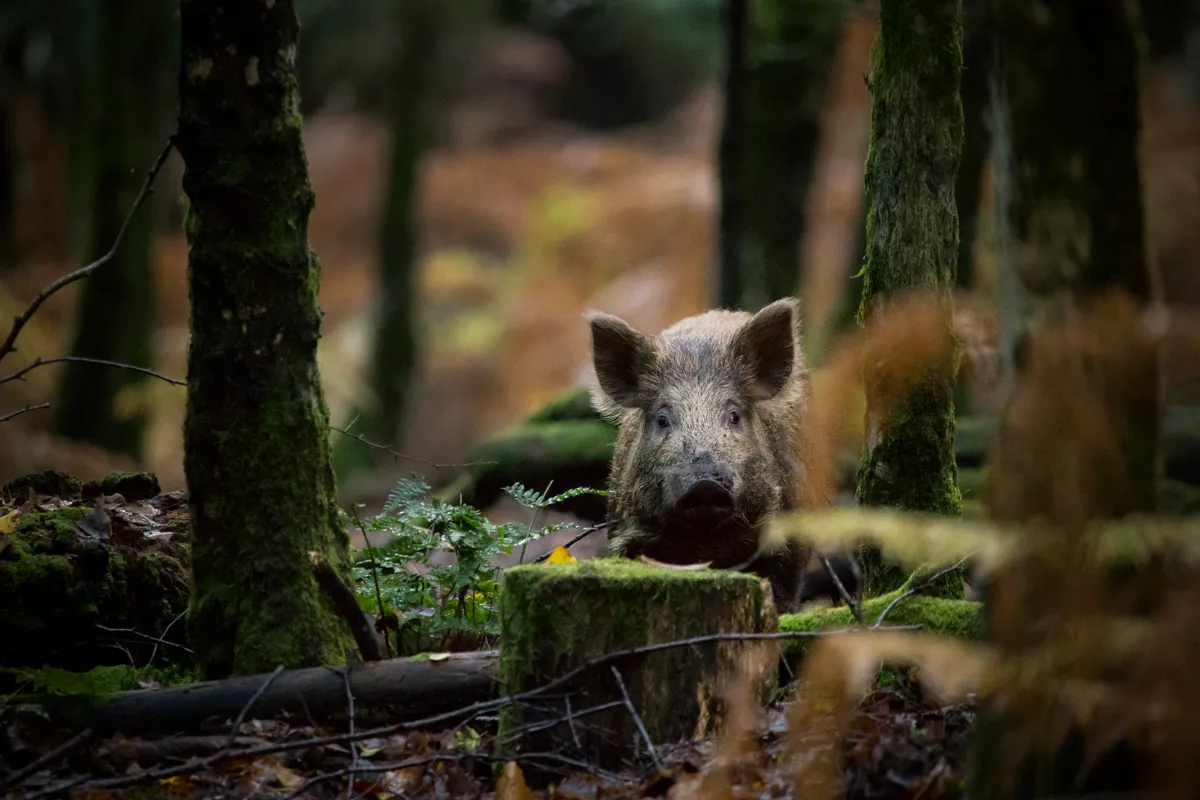The debate over boars in the British countryside has waxed and waned for many years. Should they be in the countryside, and namely the Forest of Dean at all? Are numbers too high, or too low? Are they a danger?
There is still a lot of debate, however, over just how many there are in the forest and what impact they have.

Guide to wild boar, including what they eat, where they live and their impacts on the environment.
What are boar?
Wild boar are large animals, weighing between 60 and 100kg and standing up to 80cm at the shoulder. Their thick, bristly top coat has a much softer under-layer.
Wild boar young have a lighter-coloured coat than adults. Ginger-brown with stripes for camouflage, it has earned them the name ‘humbugs’
What do boar eat?
Boars are omnivores and will eat a wide range of food, but the majority of their diet comprises roots, bulbs, seeds, nuts, fruit and green plants.
You may also like:

Are Britain's boar wild or feral?
The first animals became established near Ross-on-Wye in the 1990s, with a second unsanctioned release of 60 animals in 2004.
All of the boars came from farms and so are classed as ‘feral’, even though the wild boar is native to the UK. The species first became extinct here in the 13th century. It was then reintroduced, but disappeared for a second time around 300 years ago.
Wild boar and domestic pigs

Apart from a few isolated examples, all domesticated pigs are descended from the wild boar (Sus scrofa).
Wild boar, which are naturally widespread and common right across the Eurasian landmass as far as the Russian Far East (and including Great Britain, Japan and the main islands of Indonesia), appear to have been first domesticated in the Anatolia region of what is now Turkey some 9,000–10,000 years ago.
But a separate domestication also occurred in China a bit later. They were brought to Europe around 6,500 years ago (from Anatolia), and this may have inspired people living here to carry out their own domestication efforts. Indeed, genetic studies suggest that European domestic pigs are descended from European wild boar.
Are boar dangerous?
According to wildlife photographer and wild-boar fan Ben Locke, boar are not a danger to children. They possibly pose a danger to aggressive dogs. Take extra care if you have a dog and let it off the lead. There has been at least one instance of a dog being fatally injured by a wild boar, but the dog attacked the boar first.
As for well-tended gardens and prized lawns – guilty as charged.
What is the boar population in Britain?

There may be over 4,000 wild boar at large in the UK. The Forestry Commission currently puts the population in the Forest of Dean (by far the most populous site in the UK) at around 1,200 animals, considerably lower than the 1,635 estimate of 2018.
Are boar culled in Britain?
Forestry Commission rangers cull the boar in order to keep numbers down.
But David Slater, a former volcanologist who set up the Friends of the Boar website and has campaigned against culling, says his research suggests there are unlikely to be more than four boar per square kilometre in the forest, which would give a total population of about 400. Coincidentally, the commission’s stated policy is to reduce boar numbers to 400.
What impact do boar have on the environment?

There’s widespread disagreement about their impact. David Slater (Friends of the Boar founder) is in no doubt that their rooting behaviour knocks back the bracken, and he knows a site in the Forest of dean where rare small pearl-bordered fritillary butterflies thrive thanks to the activities of the boar.
At a different site in the Forest of Dean, female boar gather in the spring to have their piglets – humbugs, as they are known, for their stripy appearance. Here, there’s a large patch of open land where the pervasive bracken has been replaced by a far more varied mix of grasses, thistles and flowers. If we were here earlier in the year, there would be bluebells.
According to David, where the boar are, there’s healthy grassland and forest. It is thought that they rotovate the soil and that puts bacteria and air into it and helps to bring up seeds to the surface. The boar get seeds stuck in their fur, and then they have a wallow somewhere else and rub seeds back into the soil.
David also says that their impact on treasured wildflowers such as bluebells is overstated. Yes, they rootle around in areas where bluebells grow, but he’s noticed that they rarely eat the bulbs because they’re looking for insects or roots.
There is surprisingly little research into the boar’s impact on bluebells. A paper published in Forestry Journal in 2011 found plenty of flowers in areas where boar had been feeding and concluded that – at current densities – they were no threat. They could, however, be having an effect on tree regeneration, the authors said, by frequently disturbing the same patch of earth, making it hard for saplings to become established and survive.
Dr Chris Sandom has carried out research into the impact of wild boar on bracken and heather at Alladale, and his work has shown that wild boar disturb ground dominated by bracken or heather, creating an area where tree seeds germinate and reforestation can occur.
But that, of course, will only happen if the boar don’t return when saplings are still young. If predators – which, in the boar’s case in Britain, would have been wolves – are present, then that both reduces animal numbers and creates a ‘landscape of fear’ that spreads their activity more widely. The point is that wild boar, on their own, are neither bad nor good – they are a native species that play a role in maintaining healthy ecosystems.
Where do boar live in the UK?

There may be over 4,000 wild boar at large in the UK, with four main populations and many smaller ones, including confirmed sightings in Scotland. For context, France holds around 700,000 wild boar.
Kent/East Sussex
Wild boar have been discovered in the wooded lowlands of the Weald of Kent and East Sussex and the population may number 250–300 individuals. These are thought to be descendents from escapees from a wild boar farm.
Forest of Dean
As detailed in this article, 400–1,600 wild boar are roaming this Gloucestershire forest, with individuals and family groups now being spotted in the neighbouring Wye Valley and the farmlands of Monmouthshire and Herefordshire.
West Dorset
A population of over 50 wild boar has established itself in west Dorset, with many sightings in neighbouring Somerset, too.
North Devon
Breeding wild boar have been spotted frequently on Exmoor and surrounding wooded valleys. Again, these are thought to have originated as escapees from boar farms. Total numbers are believed to be between 50 and 100.
How to see boar

You can watch wild boar quite safely in the Forest of Dean. Try in the woods between the Sculpture Trail starting at Beechenhurst Lodge and the Go Ape site: goape.co.uk/locations/forest-of-dean-beechenhurst.
Your best bet is to go in the late afternoon or dusk and walk along one of the logging tracks.
Take extra care if you have a dog and let it off the lead. There has been at least one instance of a dog being fatally injured by a wild boar, but the dog attacked the boar first.
Boar breed mainly in the spring time, and some reports suggest you shouldn’t get between a sow and her piglets. Never feed the boar. This is likely to make them less afraid of people.
